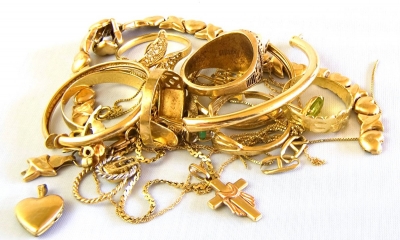
Iron mining in Western Australia produced 826 million tons of iron ore in 2018, which will convert to roughly several hundred million tons of iron metal. (Note that ratio of ore to metal.) The scale of Australian extraction of iron ore is quite impressive. Those piles in the first picture? That’s iron ore, a mountain of it.
Iron ores are easily accessible, easily converted to iron metal, and can be found in vast quantities. Iron ore is so plentiful that Australia makes a profit selling the ore at $100 to $170 (Australian dollars) per ton. That’s pennies per pound of iron ore, never mind the cost per troy ounce.
Aluminum is also produced in huge quantities, with tens of millions of tons of metal made per year. Aluminum is found in a number of rich deposits of bauxite (available by the tens of billions of tons around the world) that converts from 2 tons of bauxite to 1 ton of aluminum metal.
But gold?
Gold’s yield from rock is measured in ounces per ton of ore. Gold mines may have to extract up to 100 tons of rock to get an ounce of gold.
If those 826 million tons of Australian iron ore were gold-bearing rock instead then you might get as little as 230 tons of gold from them. (Current global gold production is about 3,100 tons per year.)
Further, gold deposits are not as common as iron ores or aluminum ores.
That’s why gold isn’t going to be treated as an inexpensive metal like iron or aluminum. It just isn’t as common or easily found. Iron and aluminum actually make up a significant percentage of Earth’s mass; gold does not.
Gold is subject to some odd consumer demand that drives up its price unnecessarily at times, but one reason for its high cost is that it’s hard to extract and isn’t nearly as common as iron or aluminum.
Credit : Quora
Picture Credit : Google

